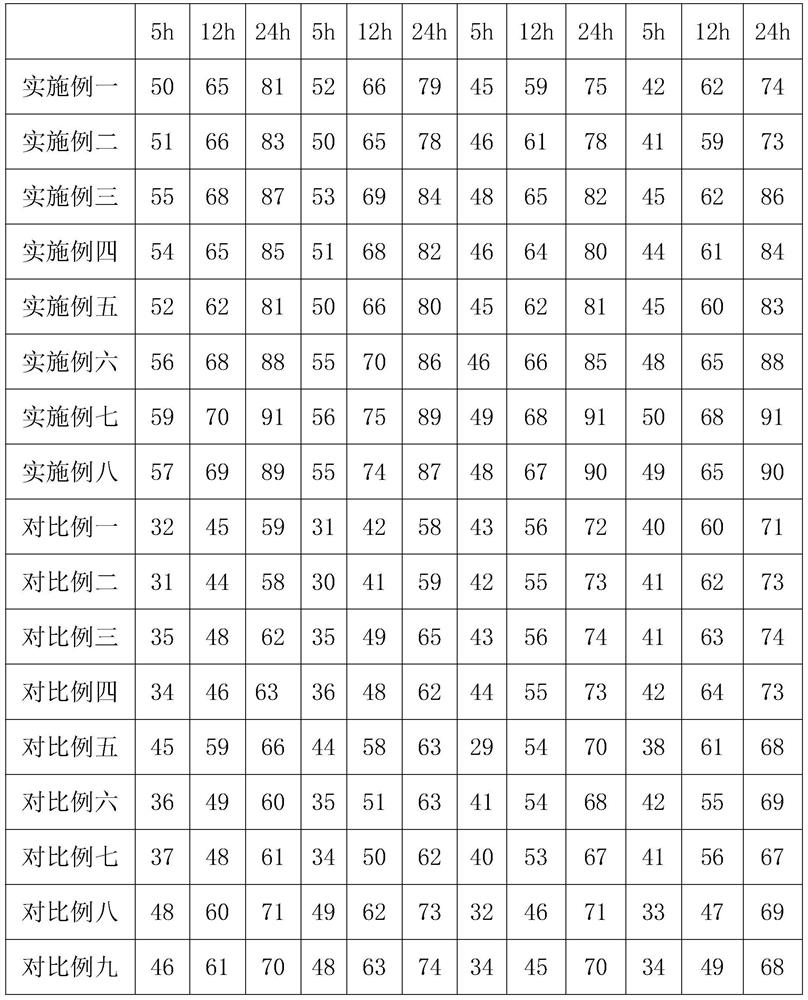Community life excrement treatment method
A feces treatment and living technology, applied in the direction of biological sludge treatment, sludge treatment, special treatment targets, etc., can solve the problems of water pollution, air pollution, etc., achieve the effect of reducing pollution, reducing load, and improving transportation safety
- Summary
- Abstract
- Description
- Claims
- Application Information
AI Technical Summary
Problems solved by technology
Method used
Image
Examples
Embodiment 1
[0038] A method for treating domestic feces in a community, comprising the following steps:
[0039] S1: Collect the domestic feces of households within a radius of 2km into the vacuum automatic collection tank through the feed pipe, and install an ultraviolet sterilizer on the feed pipe of the vacuum automatic collection tank. The end is connected to the community feces concentration pool, and the feces are disinfected with ultraviolet light before the feces enter the community feces concentration pool;
[0040] S2: Add deodorant and flocculant to the vacuum automatic collection tank, deodorize and flocculate the feces for the first time, and then enter the feces concentration pool of the community;
[0041] S3: Transport the feces in the feces concentration pool of the community to the feces treatment station, perform secondary deodorization, preliminary degradation, and heating and fermentation of the feces. The heating temperature is 70°C to complete the sterilization;
...
Embodiment 2
[0048] The difference from Example 1 is:
[0049] The deodorant raw material comprises the following components by weight: 38 parts of activated carbon, 14 parts of fluorinated activated carbon, 28 parts of boric acid, 23 parts of calcium oxide, 33 parts of dimethyl carbonate, 22 parts of didecyldimethylammonium chloride, 24 parts of taste-masking additives.
[0050] in:
[0051] The carbon to fluorine ratio of fluorinated activated carbon is 1.15.
[0052] The taste-masking additive comprises the following components in parts by weight: 20 parts of methyl salicylate, 24 parts of citric acid and 26 parts of peppermint. Embodiment three:
Embodiment 3
[0053] The difference from Example 1 is:
[0054] The deodorant raw material comprises the following components by weight: 42 parts of activated carbon, 16 parts of fluorinated activated carbon, 33 parts of boric acid, 25 parts of calcium oxide, 36 parts of dimethyl carbonate, 28 parts of didecyldimethylammonium chloride, 27 parts of taste-masking additives.
[0055] in:
[0056] The carbon to fluorine ratio of fluorinated activated carbon is 1.2.
[0057] The taste-masking additive comprises the following components in parts by weight: 26 parts of methyl salicylate, 30 parts of citric acid and 36 parts of peppermint.
PUM
 Login to View More
Login to View More Abstract
Description
Claims
Application Information
 Login to View More
Login to View More - R&D
- Intellectual Property
- Life Sciences
- Materials
- Tech Scout
- Unparalleled Data Quality
- Higher Quality Content
- 60% Fewer Hallucinations
Browse by: Latest US Patents, China's latest patents, Technical Efficacy Thesaurus, Application Domain, Technology Topic, Popular Technical Reports.
© 2025 PatSnap. All rights reserved.Legal|Privacy policy|Modern Slavery Act Transparency Statement|Sitemap|About US| Contact US: help@patsnap.com



